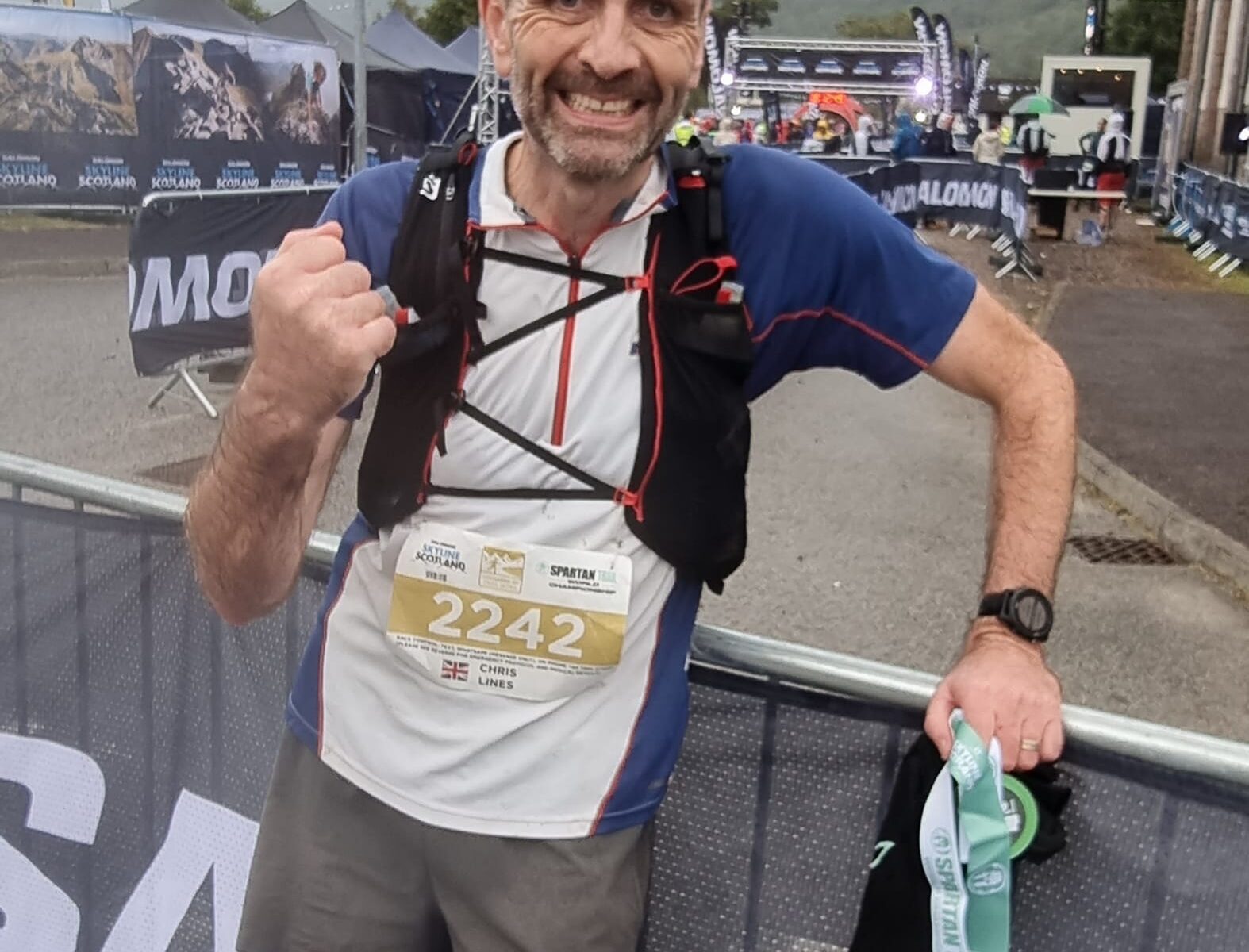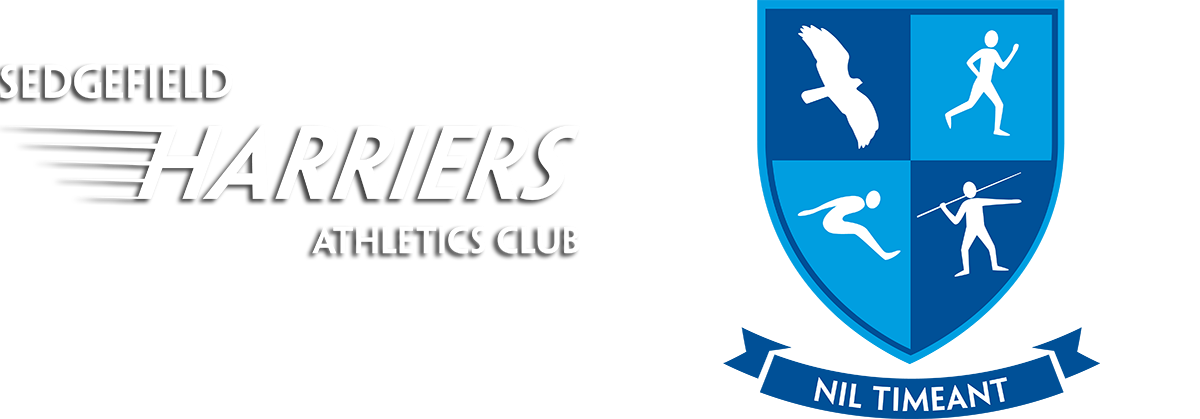Those blasted pork pies
An ultra adventure in the Scottish Highlands
by Chris Lines
I’m not a big fan of pork pies. I rarely eat them. In fact, I very rarely eat them. It’s not that I actively dislike them, but they are not high on my list of preferred pastries. So, when I look back and consider that I recently carried four of the ruddy things for 57km, I am led to start questioning some of my choices in life. I carried them, but did not eat any of them. This, I feel, was a tactical error during my participation in the Lochaber 80 Trail Ultra. However, I think it might have been the only tactical error that I made during the event.
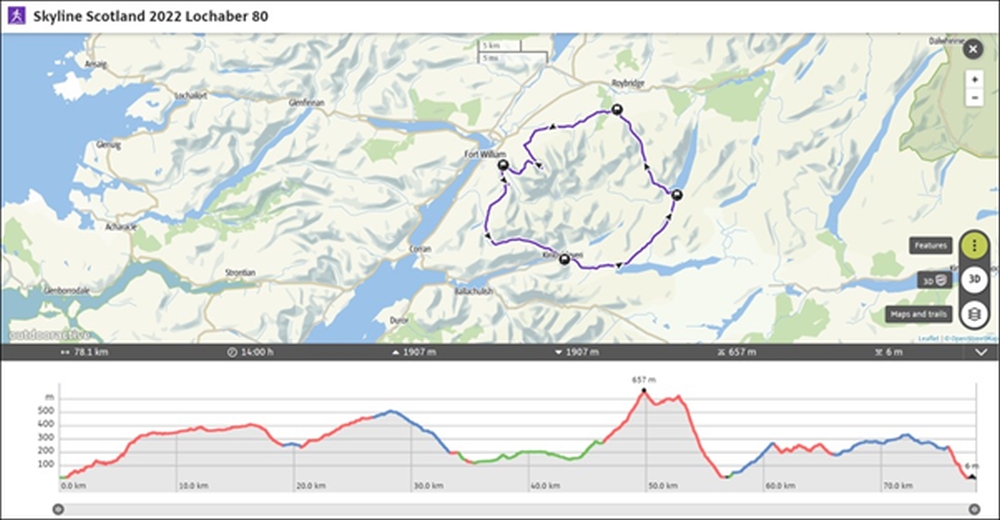
Ultra running is not really my thing and I have no ambition to change that. There are other members of Sedgefield Harriers who excel at covering very long distances with apparent ease and comfort. I doff my cap to them, but don’t intend to join their ranks. The reason for my temporary lapse is linked to the Great North Run. I take part in the world’s largest half marathon every year, but was unable to secure a place for 2022 via the lottery and hadn’t forked out even more money to guarantee a place through Great Run membership. I gratefully accepted a charity place from Durham Wildlife Trust, but it felt a bit cheeky to ask people to sponsor me at an event that I’d participate in anyway. In a moment of weakness, I decided to up the stakes by tackling the treble of a half marathon, full marathon and ultra marathon. Alongside the Great North Run, I knew which event would be the marathon – Kielder Marathon at the start of October. However, I needed to find an autumn ultra.
As it happens, I do some work for the company that organises the Salomon Skyline Scotland weekend, which this year was going to see the addition of some new trail races, including an 80km monster. Without giving myself the time to reconsider, I took the plunge and secured a place on the Lochaber 80, which would also be part of the Spartan Trail Ultra World Championship. I had actually known this, but had forgotten until I noted the names of some others who had entered. Suddenly, I was daunted by more than just the distance and elevation ahead.
Salomon Skyline Scotland is an annual event based up in Kinlochleven in the Scottish Highlands, in the shadow of the Ben Nevis range. The weekend includes a series of skyrunning and trail races, with distances from 5km to 80km. The toughest of these are ultras, in the form of two of the three skyruns, the 52km Ben Nevis Ultra (with 4,000m of ascent) and the 52km Glencoe Skyline (with 4,750m of ascent) – definitely not for me! Alongside the Mamores Stalker 27km Trail Race, the Lochaber 80 made its debut this year. Unlike the two 52km skyruns, the race was designed to be much more ‘runnable’ for most of its distance, with a route that weaved its way through the glens, rather than head to the summits. Nevertheless, there was plenty of technical terrain to tackle (especially in the first 25km), and the significant matter of 2,000m of ascent, including a long slog up the flanks of Ben Nevis at around 50km into the run.
I didn’t enter the event until the end of July, so my training for the Lochaber 80 was limited in its scope. While on holiday, I managed to fit in a 21-mile run with about 220m of ascent, but that was as far as I got in actual running preparation. As race day approached, I felt a bit nervous, but one way or another, it was going to be an adventure in a glorious part of the world, so I was excited too.
In the build up to the event, I was clear in my own mind that my first priority was to complete the 80km within the time limit allowed. The Lochaber 80 was advertised as an ultra with generous cut-off times. The race started at 7:00am and the first cut-off at 19km was 12:00pm. The second at 33km was 2:00pm, the third at 57km was 6:30pm, and participants were required to complete the run by 10:00pm. On the face of it, those times are indeed generous, but 80km is a long way and much of it would be unknown territory for me. However, I did allow myself a more ambitious stretch target, which was to get around in 12 hours. Mrs Lines was good enough to join me for the trip to Scotland and so we set off for the Highlands.
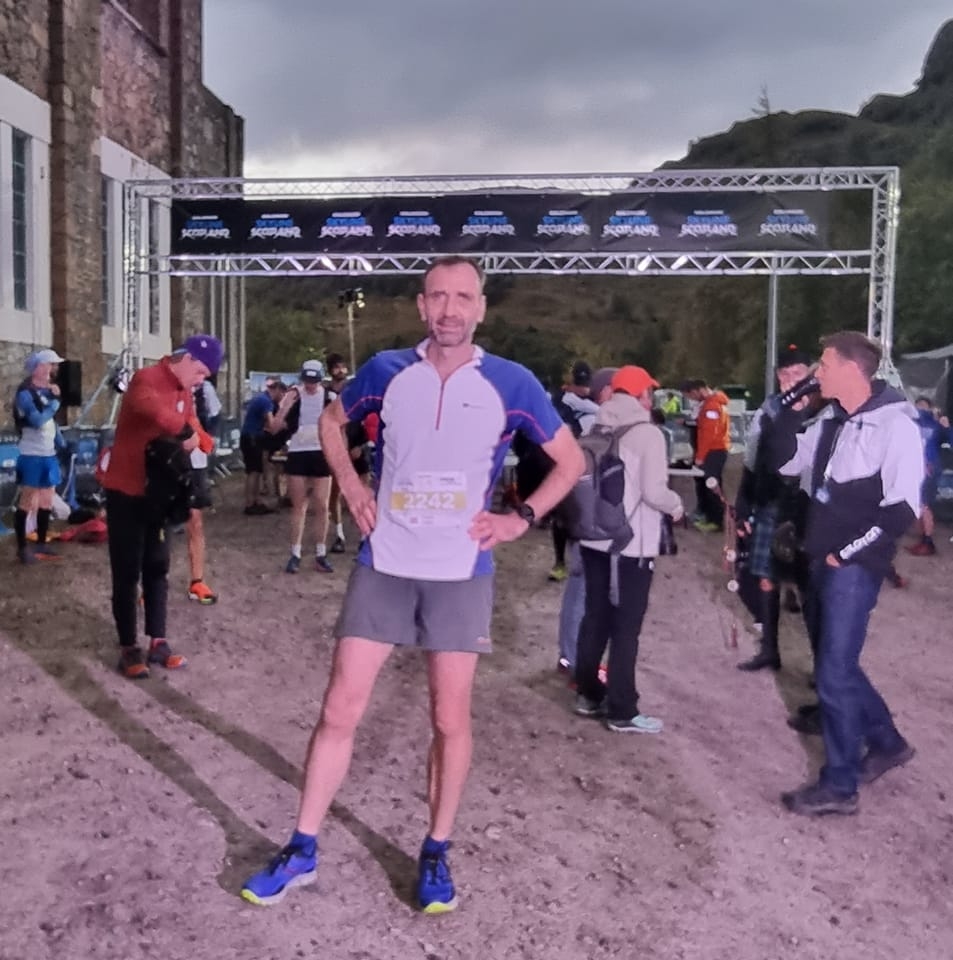
The mandatory kit list for the event was relatively extensive; waterproof jacket and overtrousers, insulated top, extra baselayer, hat and gloves, survival bag, head torch, water bottle/hydration system, whistle, and sufficient food. Ahead of packing everything for the weekend, I popped to a shop for a few bits and bobs and it was there that I spotted the mini pork pies. They promised a succulent filling, all encased in beautiful golden crusty pastry. I’d read plenty of accounts from ultra runners who ended up craving proper comfort food like that during a race, and I knew from my limited experience of longer events in the past that a good old fashioned pork pie or two could prove to be very useful. So, when I lined up nervously early on the morning of Saturday 17th September, I had four of the beggars stuffed into a pocket in my race vest.
A piper sent us on our way at the allotted time, and the racing snakes at the front rapidly disappeared off along the first trail. I focused on getting into the right mindset and rhythm for a very long run, making sure that my pace was comfortably sustainable. The first section presented the most technical underfoot conditions, which was actually helpful in discouraging me from going too fast. I had the route downloaded to my watch, which started counting down the distance from the start (this was not massively helpful from a psychological point of view in the early stages!), but there was no navigation involved, as the entire route was marked by red flags (all of which were removed afterwards, leaving no trace).
At around 14km in, I passed a first casualty, a runner who had stopped for some reason, but he wasn’t in distress and assured me that he was okay. Only 200m or so further along the trail, I met a member of the event support team who was heading back to find him, either alerted by another participant or by the runner himself sending a message. This moment was typical of the organisers’ approach to managing the race and the safety of those taking part – exemplary throughout.
I reached the first support point in about two hours and twenty minutes. I knew that the first cut-off time was very generous, but this still felt great! And I felt really good too, boosted by chatting to the two volunteers there, and the snacks that they had on offer – I helped myself to cheese, potatoes and some crisps, and refilled my water bottle. A fellow runner arrived just after me and then we set off on the next 14km section together.
What followed was really odd. About one kilometre along the trail, my legs started feeling really heavy and my energy level dipped. That coincided with a tussocky, boggy, ill defined section of the route, and at one point I mis-stepped and found myself up to my waist in water and mud for a few seconds. I kept pace with my temporary running companion for a few more kilometres, but still felt lethargic and ushered him on his way. Then I was joined and passed by one of the UK’s leading ultra runners, Elaine Bisson. By now, we were back on a wide gravelly track, heading gently downhill. At one point, Elaine took a tumble just in front of me, but thankfully, she wasn’t hurt and was soon moving ahead of me again. I started to feel a bit better during the last three or four kilometres to the next support point – whether the issue had been physical or psychological or both I don’t know, but I was definitely stronger as I approached another table covered in salty and sweet goodies. Noting that I’d reached the 33km point in about four and a quarter hours cheered me up no end too, as I’d got there even before the cut-off time for the previous support point.
Elaine and the other runner were still there when I arrived, preparing to leave, but I didn’t attempt to set off with them. I took some time to do some faffing and eat some of the cheese sandwiches that were on the table, and some more crisps. Just I was about to set off again, the next runner arrived. I left a couple of minutes ahead of him.
In my mind, I had always considered that the next section of the run would be the crux for me. If I could get to the final support point at 57km in just about one piece and with enough time in the bank, then I was confident that I would be able to drag my body around the final half marathon. Of course, ‘if’ was the operative word, as I was heading into uncharted territory and a sustained climb up to the climbers’ hut beneath the towering buttresses of Ben Nevis. Leaving the second support point, I experienced another dip in energy and mood – the fact that I still had nearly 50km to go probably had something to do with that! A couple of other participants went past me.
With the knowledge that the long ascent to the hut was a little over 10km ahead, I deliberately slowed down, trying to reserve some energy for that specific challenge. And a challenge it was! The path wasn’t particularly steep, but took me steadily (and slowly) uphill for over three kilometres. I could see the hut from a long way off, but it didn’t seem to get any closer until I was a few hundred metres away. My relief at reaching it was matched by my delight at finding a fast running stream close by, where I could refill a bottle.
Then it was an about turn and a welcome gentle downhill on the other side of the glen, followed by another short climb before the long descent to the next support point in the Ben Nevis Visitor Centre car park. It was getting on to mid-afternoon at this point, which presented a new challenge. The path down to the visitor centre is very rocky and not great for running on, but more than that, this seemed to be peak time for folk returning after a morning ascent of the main tourist route up the Ben. It was like the congestion at the start of the Great North Run (sort of)! After a steep, careful descent, the sight of the team at the final support point was very welcome. It wasn’t quite 3:00pm and I was still in one piece.
At this moment, I started to believe that not only would I complete the Lochaber 80, but that I could even achieve my stretch target. But I was careful to not get complacent – after all, there was still more than half a marathon to get through. The team at the support point cheerfully reassured me that much of the final section was very runnable. I joked with them that this was a lovely thought in theory, but unlikely for me in practice. Nevertheless, I got stuck into some final faffing ahead of the last push, aiming to lighten the load and ditch any provisions that I no longer needed. And that takes me back to those pork pies.
I’d carried them for 57km in the belief that they could provide me with vital sustenance at a crucial moment. But now that I’d reached that third support point, I had no appetite for them and I really didn’t see the point in carrying them for another 23km. So I waved them a wistful goodbye, wondering whether they were as tasty as they looked, as I headed along the next trail.
I left that final support point knowing that to complete the run in 12 hours, I had four hours to get to Kinlochleven – by no means rapid for 23km, but this was after already completing almost three half marathons. While I felt relatively okay, the mileage was taking its toll on body and mind. It was time to dig in and keep repeating the mantra ‘run when you can, walk when you have to’.
About seven kilometres into that final leg, as drizzle started to turn to persistent rain, I began to feel a bit light headed and hankered for some substantial food, something like an emergency pork pie for example! In the absence of that option, I had to suffice with an ‘infusion’ of nuts. Thankfully, that did the job, and miraculously, it turned out that even in my knackered state, significant stretches of the last 10km were indeed runnable, albeit at a very reduced pace. Slowly and surely, I could sense that the finishing line was threatening to loom.
I actually enjoyed the last three kilometres, which took runners steadily downhill and back into Kinlochleven. Although my main aim from the start had always been to simply get round, rather than race anyone, by now I was keen to not ship any more places, so pushed as much as I could, and my pace for the final 500 metres was my fastest of the entire run. I even managed something that a generous observer might describe as almost like a sprint finish. The reception for every runner at the end was fantastic, made even more special for me by Catherine being part of it. And as I crossed the line, Neil Young’s ‘Rockin’ in the Free World’ was blasting out over the PA. Bonus! It turned out that the next runners were only two and three minutes behind me respectively, so that final effort was worth at least two places.
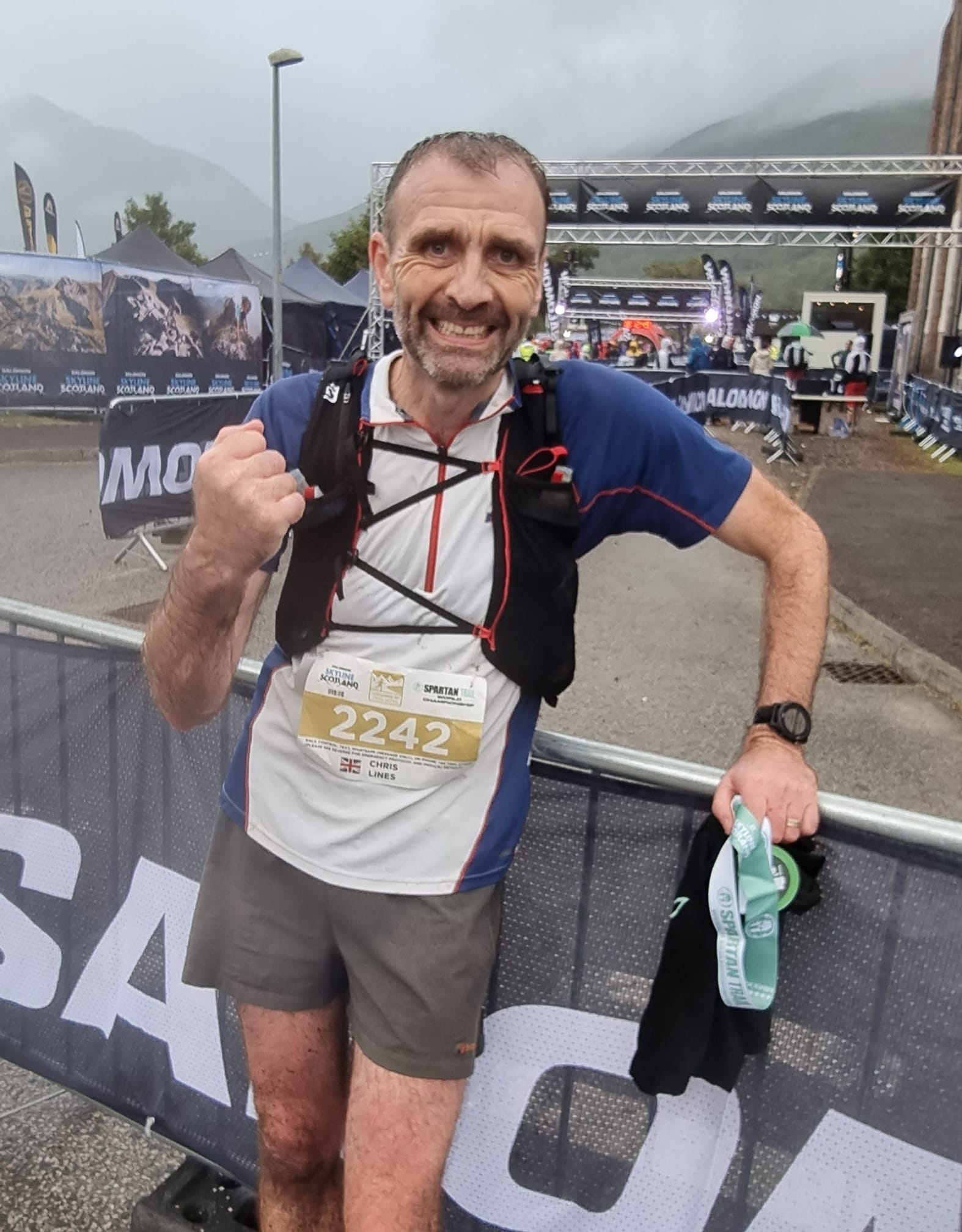
It was the end of a memorable day and a thoroughly rewarding experience. Reflecting on it since, I am pretty happy with how I planned and executed my run. While my pastry tactic didn’t work out, I did manage my nutrition pretty well, setting an alarm on my watch to go off every hour as a reminder to eat, and then obeying that reminder. And when my pace slowed at those moments when I was struggling a bit, or a fellow participant floated past, I didn’t allow myself to worry unduly and just kept plodding on, giving myself the occasional pep talk as I went. Those pep talks were almost all out loud while in splendid isolation. I’m quite content running on my own. In fact, I think that I preferred it to those moments when I had company.
Oh, and one other point. For various reasons, I’m always cautious about recommending running footwear to people, but if you have narrow feet like me, I’d certainly suggest considering Saucony products. I invested in a pair of the brand’s Peregrine 12 trail shoes. If truth be told, I left that purchase a bit too close to the event for comfort and had only worn them twice beforehand, for a parkrun and a Wednesday evening training session. So, that could have become a problem, but they performed brilliantly in terms of grip, traction and comfort up in Scotland. Amazingly, when I removed them after the race – now thoroughly soaked and caked in mud – my feet were entirely blister and blemish free. I was astounded.
I finished the Lochaber 80 in 11 hours, eight minutes and 24 seconds. For some perspective, the winner – Sweden’s Simen Hjalmar Wästlund – was nearly four hours ahead of me. Nevertheless, I was delighted, particularly when I discovered that I’d finished 20th overall and first in the V50-59 category. I still wouldn’t describe myself as an ultra runner, but I’m telling no porky pie when I state that I’ve completed an ultra run in a world championship series. Which is nice.
And if you want to contribute to my fundraising for Durham Wildlife Trust, please head along to www.justgiving.com/fundraising/ChrisJLines.
